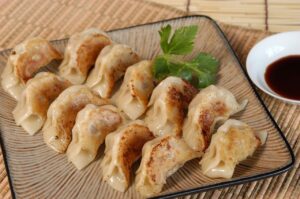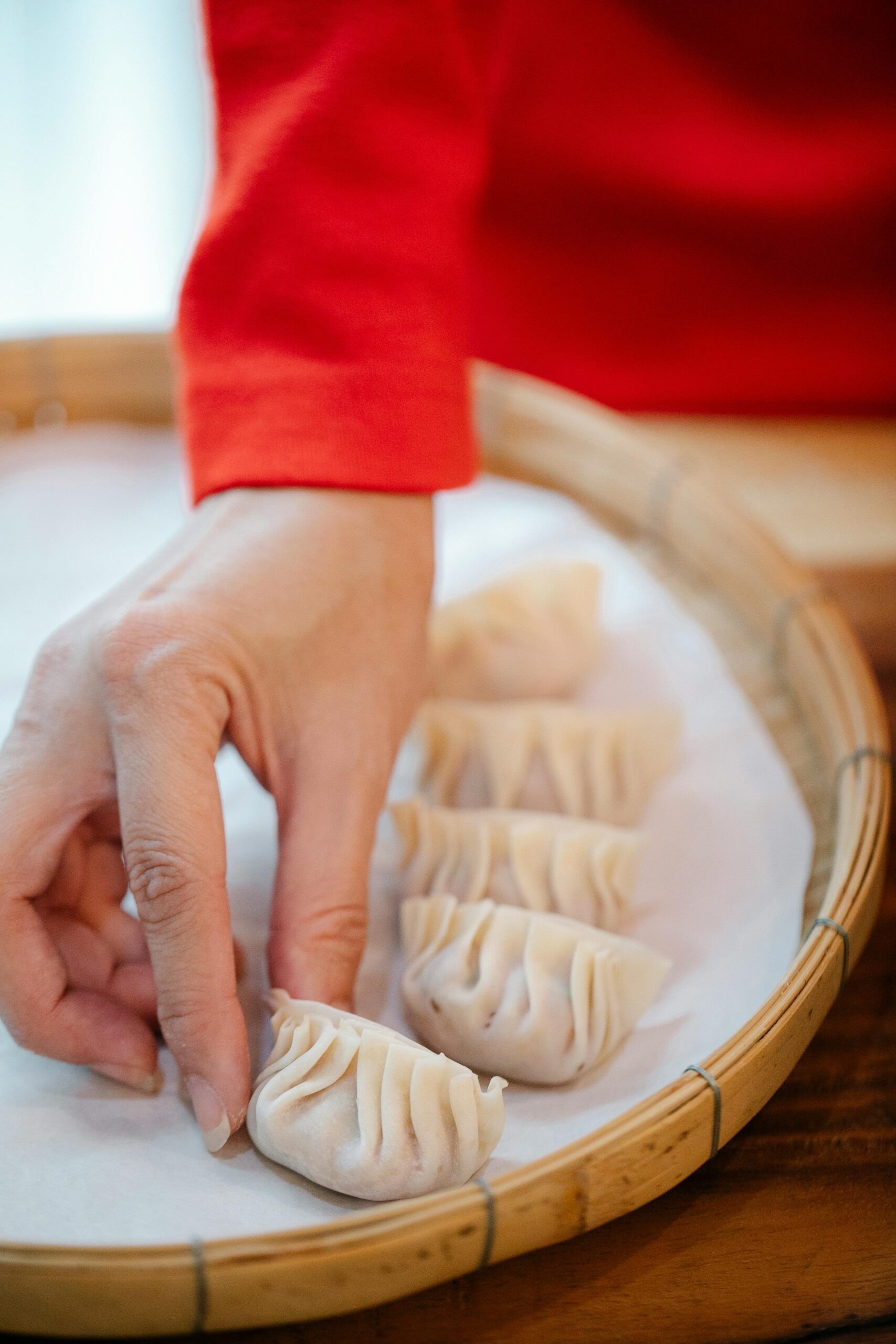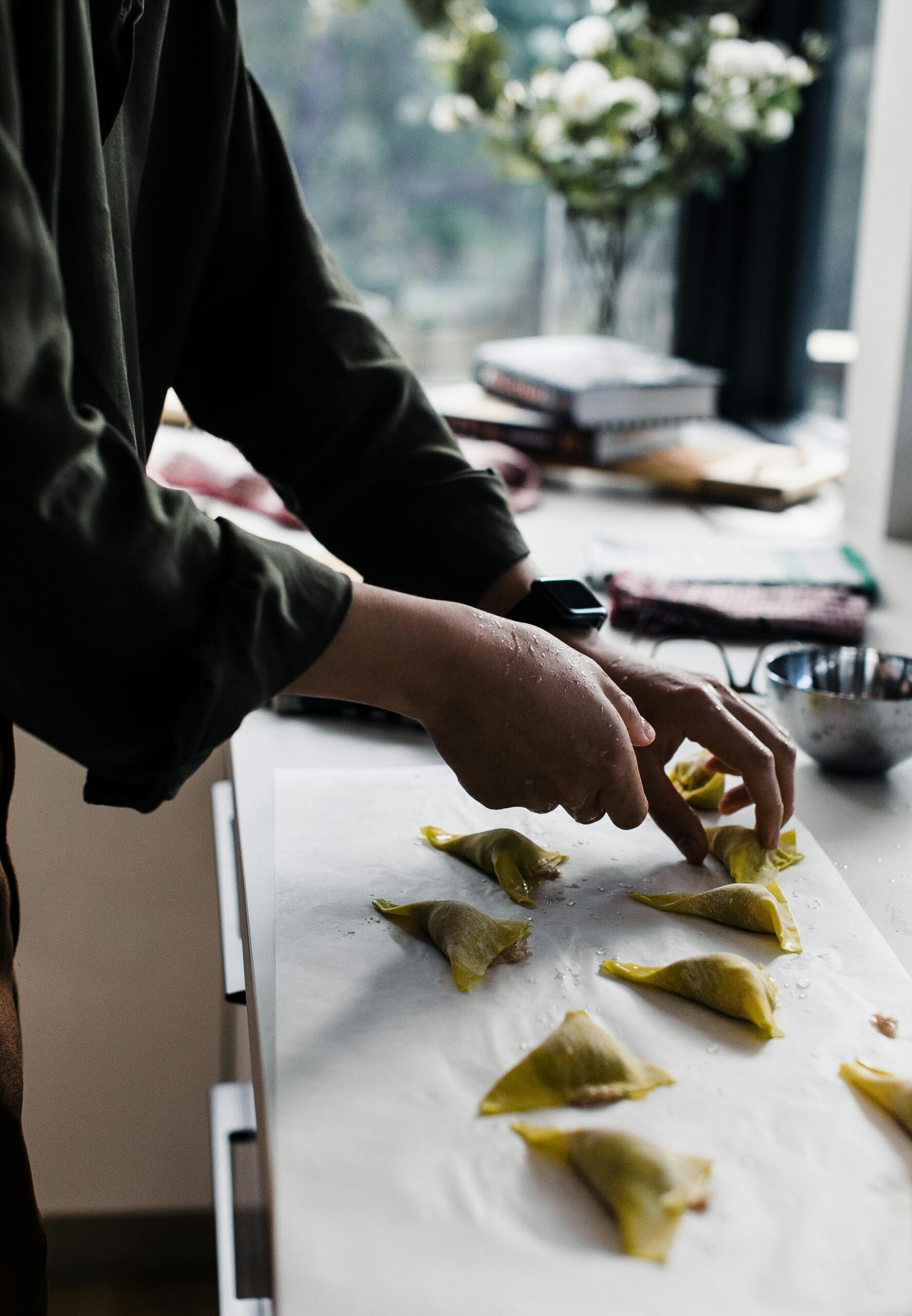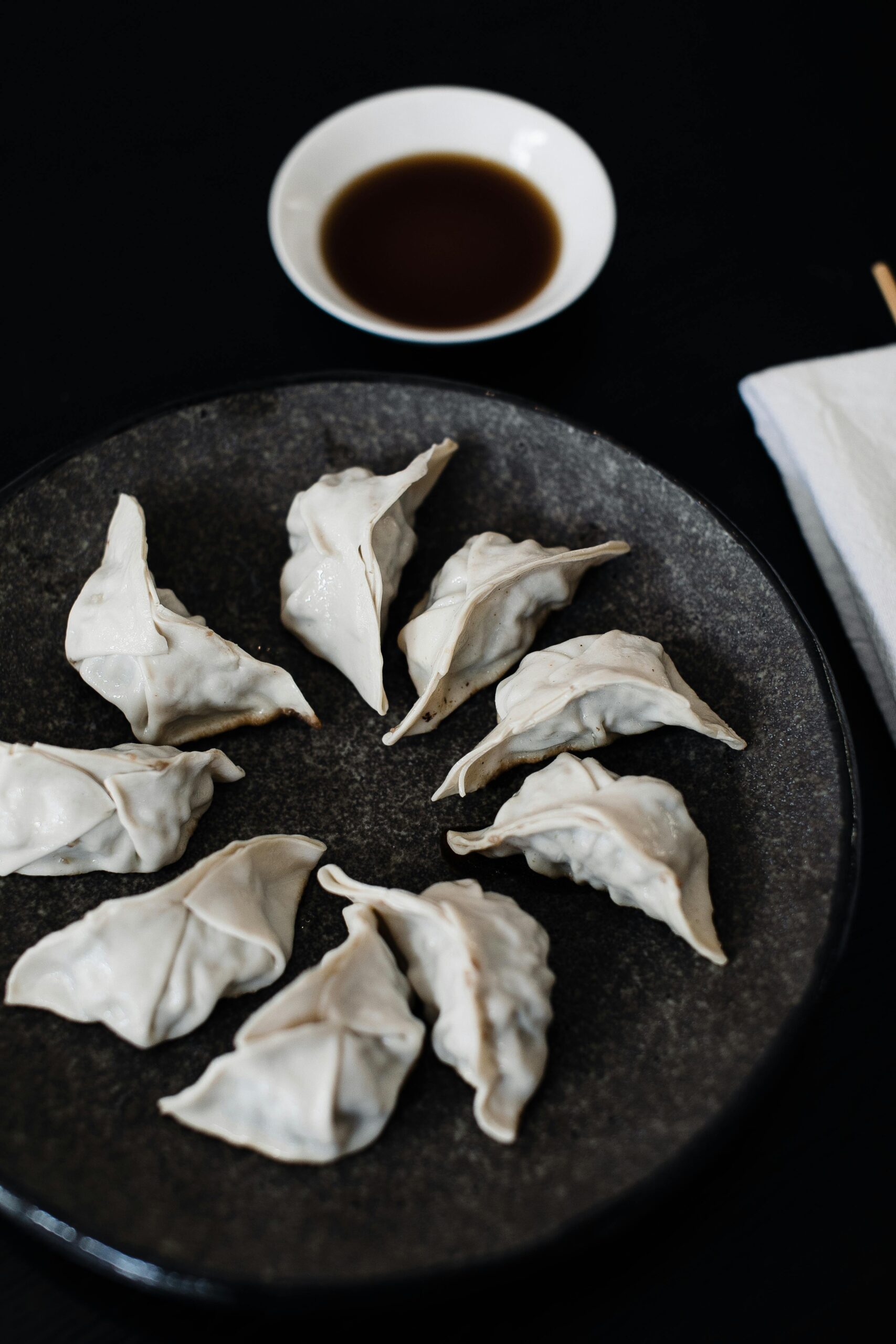Gyoza dough is a very popular dough in Asian cuisine, especially in Japan. However, the word “gyoza” is of Chinese origin, where it is called “jiaozi”.
The term jiaozi comes from the Han dynasty in China, more than 1,800 years ago. Zhang Zhongjing, a famous doctor of the time, invented them as a way to treat the poor who suffered from frostbite in winter.
In time, jiaozi became very popular throughout China and spread to other Asian countries, including Japan. Japan adapted them with its own variant of filling and way of preparation.
What is gyoza dough?
Gyoza dough is a dough used, as the name suggests, to make gyozas. This dough is similar to fresh dough in texture and consistency, however, it is made to be more elastic and resistant. This makes it easier to handle and fold.
This dough is made from wheat flour, hot water and salt. Sometimes other ingredients may be added to improve the texture and taste of the dough. The wheat flour used to make gyoza dough is usually high protein, which makes the dough more elastic and easier to handle.

Difference between gyozas and dumplings
Gyozas are sometimes confused with dumplings, as they are two similar types of food found in Asian cuisine. To distinguish between them, here are some of the differences:
Shape
On the one hand, gyoza dough has a thinner and more elongated shape, with thin folds on one side. On the other hand, dumplings come in various shapes, but are usually rounder with thicker and less defined folds.
Ingredients
Gyoza dough tends to be thinner and more elastic, and the filling can include a variety of ingredients such as meat, vegetables, vegetables and seasonings. However, dumpling dough varies depending on the region, but tends to be thicker. The filling may also vary and include meat, seafood, vegetables and different types of seasonings according to the traditional recipe.

Cooking method
The gyozas are cooked using a mixed cooking method that involves browning in a pan with a little oil and then steaming in the same pan. This gives them a crispy texture on the bottom and soft on top.
Dumplings can be cooked in a variety of ways, boiled, steamed, fried or even oven-roasted.

Types of gyoza dough
There are several types of gyoza dough that vary depending on individual preferences and tastes. Here are some of the most common variations:
- Wholemeal flour gyoza dough. Instead of using refined wheat flour, wholemeal flour is used to make the gyoza dough. This adds a more robust flavour and a slightly denser texture.
Spinach. Some variants can be made with spinach in the dough to give it a green colour and vegetable flavour. This type is popular with those looking to add more vegetables to their diet.
- Beetroot. Similar to spinach, except that beetroot puree is used. In addition to the colour, the beetroot adds sweet and earthy flavour to the gyozas.
- Potato gyoza dough. Mashed potato or grated potatoes are an option for making gyoza dough. This makes the dough softer and adds a slightly sweet taste to the gyozas.
- With squid ink. For a unique touch of colour, squid ink can be added to the gyoza dough.
- Buckwheat gyoza dough. Instead of using only wheat flour, this gyoza dough mixes buckwheat flour with regular wheat flour to make the dough. This gives it a sturdier touch and makes the dough a little firmer.

Culinary uses of gyoza dough
Gyoza dough is versatile and can be combined with a variety of recipes, dishes and side dishes to create delicious and satisfying meals. Such as:
- Stuffed gyozas. The most traditional use of gyoza dough is to make stuffed gyozas. They are filled with a mixture of minced meat and vegetables, seasonings and spices. They are then folded into a crescent shape and cooked according to preference, either boiled, steamed, fried or grilled.
- Steamed dumplings. In addition to making traditional gyozas, this dough is used to make steamed dumplings filled with a variety of ingredients. These can include a variety of combinations such as vegetables, meat or fish.
- Deep-fried dumplings. Another option is to deep fry gyoza dumplings filled with gyoza dough for a crispy outside and soft inside. These fried dumplings are delicious and can be served with a sauce.
- Wontons. Gyoza dough also serves as an alternative to wonton dough for making stuffed wontons. Wontons are similar to gyozas but have a different shape and are often served in soup or with sauce.
- Ravioli pasta. Thanks to its versatility this pasta can be used as a fun and creative alternative to traditional pasta to make stuffed ravioli. These can be filled in a variety of ways to suit your taste and served with a sauce of your choice.
- As a garnish. Sometimes gyoza dough can be used as a garnish for some dishes, e.g. uramaki topped with gyozas.
Premium gyoza dough
EURASIE & FRERES is a French company specialising in high-quality Asian products for the European market. One of its flagship products is gyoza dough, a versatile wheat flour wrapper that comes in a variety of sizes and thicknesses.
EURASIE & FRERES gyoza doughs, thanks to their texture and taste, are ideal for a wide variety of dishes, whether fried, boiled or steamed.


